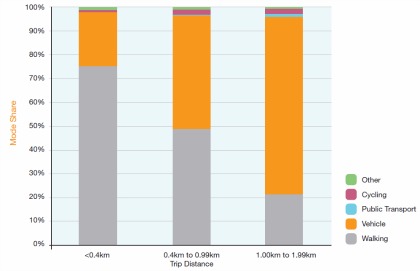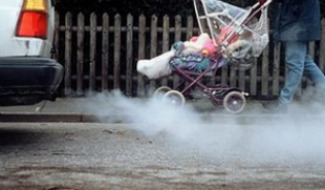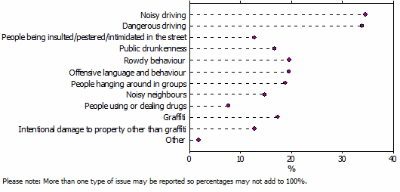Environmental benefits
 Transport mode share for short trips in metropolitan Melbourne 2007/8 (Pedestrian Access Strategy 2010)
Transport mode share for short trips in metropolitan Melbourne 2007/8 (Pedestrian Access Strategy 2010)
Walking is highly efficient in its use of urban space and energy, unlike cars which require a much larger space and use far greater energy, mainly in the form of fossil fuels.
Substituting walking trips for short car trips is a major potential source of benefit to the environment. This substitution generates a range of environmental benefits such as improved air quality, reduced noise pollution and reduced consumption of non-renewable energy sources.
The Victorian Pedestrian Access Strategy found that nearly 50% of all journeys in Melbourne between 400m and 1km are by motorised vehicle. For trips between 1km and 2 km the proportion of motorised journeys rises to over 70%. If these motorised journeys were replaced by walking the environmental benefits would be significant.
Air pollution

The impact of air toxins released by motor vehicles is a significant environmental issue. Motor vehicles contribute greatly to air pollution by emitting substances that are harmful to our environment and our health. The Environment Protection Agency found that vehicle emissions are the major source of air pollution in Melbourne.
In urban areas, emission reductions can be large because walking trips are more likely to replace short, cold-start trips for which internal combustion engines have high emission rates. The effectiveness of catalytic converters in the initial minutes of engine operation is small (WHO 2005). Hence, each 1% of automobile travel replaced by walking is estimated to decrease motor vehicle emissions by 2% to 4% (Evaluating Active Travel Benefits and Costs 2004).
The Bureau of Transport and Regional Economics 2005 estimates that in the year 2000 motor vehicle pollution accounted for between 900 and 4500 morbidity cases-cardio-vascular disease, respiratory disease, and bronchitis-and for between 900 and 2000 early deaths.
Noise pollution
 Perceptions of social disorder issues of adult Australians (Victoria Walks based on ABS Crime Victimisation, Australia, 2011-12)
Perceptions of social disorder issues of adult Australians (Victoria Walks based on ABS Crime Victimisation, Australia, 2011-12)
Road traffic noise is the main (and loudest) noise source affecting the Victorian community. This is due to its prevalence and high noise levels. In the most recent ABS survey of Australians' perceptions and experiences of 'crime victimisation', respondents were asked about social disorder issues in their local area. As illustrated in this graph, noisy and dangerous driving were clearly the most significant concerns people had about social disorder in their community.
Road traffic noise annoys, disturbs sleep and interrupts reading, relaxing and quiet activities. A survey conducted by the EPA Victoria found that 20% of people were either moderately or extremely annoyed or disturbed by road traffic noise.
Healthy human hearing is very sensitive, so to be subjected to prolonged exposure to traffic noise can be both annoying and damaging to your hearing. The EPA conducted a report that found that 40.1% of respondents are to some extent annoyed by road traffic noise and 19.3% reported that road traffic noise interfered with their sleep.
Studies have shown that there are direct links between noise exposure and health. A Danish study Long-Term Exposure to Road Traffic Noise and Incident Diabetes found that long term exposure to traffic noise was associated with cardiovascular disease and a positive association between long-term exposure to road traffic noise at the residence and the risk of incident diabetes.